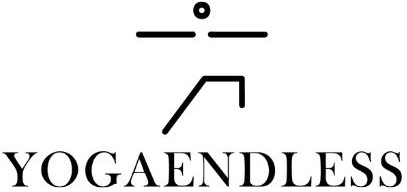Rise, Reach, and Rejuvenate: Discover Ardha Uttanasana (Half Forward Bend)

In the world of yoga, every pose tells a story — a gentle conversation between your body, breath, and inner self. One such humble yet powerful pose is Ardha Uttanasana, also known as the Half Forward Bend. Often tucked between sun salutations or overlooked in transitions, this asana is a hidden gem — especially for beginners stepping onto the mat.
Whether you’re just starting your yoga journey or looking for a gentle stretch to ease into your day, Ardha Uttanasana welcomes you with open arms (and an open spine!).
What Is Ardha Uttanasana?
The word “Ardha” means half, and “Uttanasana” means intense forward stretch in Sanskrit. Unlike the full forward fold, Ardha Uttanasana brings your spine parallel to the floor while keeping a strong and lengthened posture. Think of it as hitting pause in a deep bow — a moment to align, elongate, and energize.
It’s often practiced during Surya Namaskar (Sun Salutations), but this pose deserves its own spotlight!
Why Beginners Will Love This Pose
Gentle on the body but powerful in its benefits
Helps improve posture and body awareness
Offers a safe introduction to forward folds without over-stretching
Gives a sweet release to the hamstrings, spine, and neck
Builds confidence in alignment-based movement
If touching your toes feels like a distant dream, Ardha Uttanasana reminds you: You don’t have to fold all the way to grow all the way.
How to Practice Ardha Uttanasana (Step-by-Step)
All you need is your breath, your body, and a willing heart.
Start in Tadasana (Mountain Pose) — standing tall, feet hip-width apart.
Inhale deeply and raise your arms overhead.
Exhale and fold forward into Uttanasana (full forward fold), letting your hands rest near your feet or shins.
Inhale and lift your torso halfway up, bringing your back flat and spine parallel to the floor.
Place your hands on your shins or fingertips on the ground (in line with your toes) — whichever helps your spine stay straight.
Engage your core, lengthen your spine, and draw your chest slightly forward.
Gaze forward or slightly down to keep the neck long.
Hold for 3–5 breaths, feeling the stretch wake up your back and legs.
Exhale to release back into a forward fold or transition into your next pose.
Modifications and Tips
Tight hamstrings? Bend your knees slightly. Straight legs are not the goal — lengthened spine is!
Use blocks under your hands if they don’t comfortably reach your shins or floor.
Keep the weight evenly distributed across your feet — avoid leaning too far back or forward.
Imagine your tailbone reaching toward the sky and your heart pulling forward.
Benefits of Ardha Uttanasana
Stretches the hamstrings, calves, and spine
Improves posture and balance
Strengthens the back and core muscles
Prepares the body for deeper forward folds
Brings clarity, calm, and focus to the mind
Common Mistakes to Avoid
Rounding the back: Focus on keeping your spine long, not how far down you go.
Locking the knees: Keep a micro-bend to avoid stress on joints.
Neck strain: Keep the neck in line with the spine — no looking up too high.
Final Thoughts
Ardha Uttanasana might not be as flashy as a headstand or as trendy as a crow pose, but its simplicity is its power. It teaches us the art of pausing mid-flow, of finding length without force, and of being present in the middle of movement.
So next time you practice, give this pose your full attention. Let it be a reminder that progress isn’t always about going deeper — sometimes, it’s about standing tall in the middle of your journey.
Start small. Stay consistent. Stretch gently. And keep breathing.
